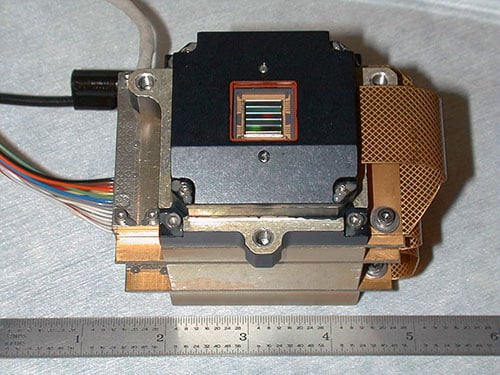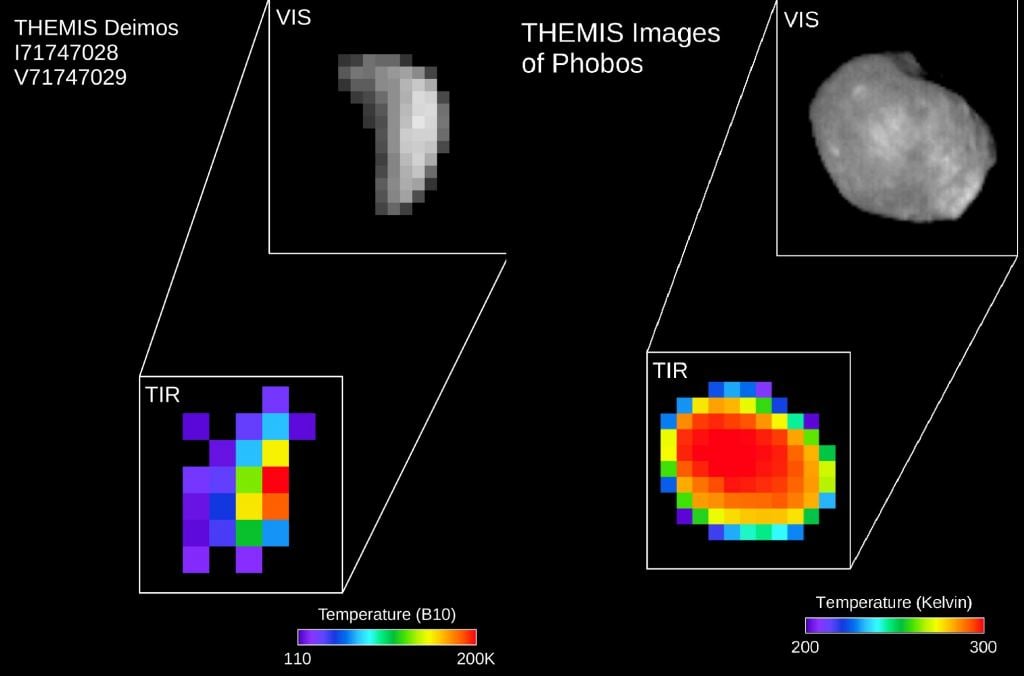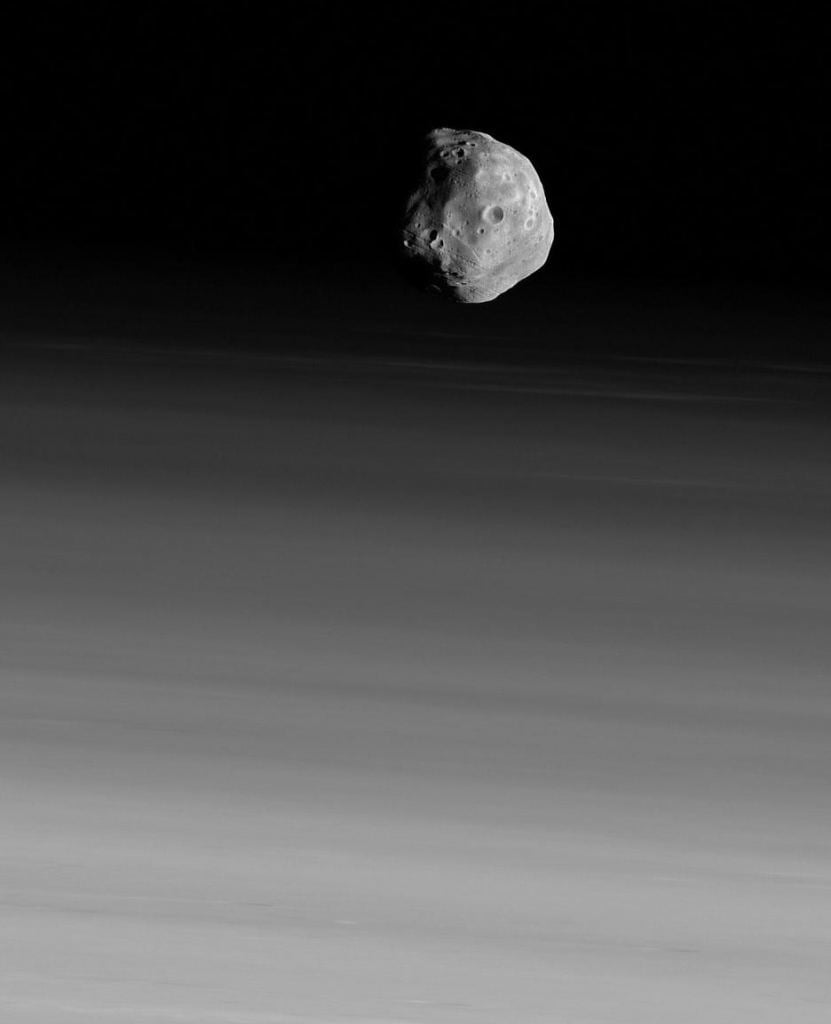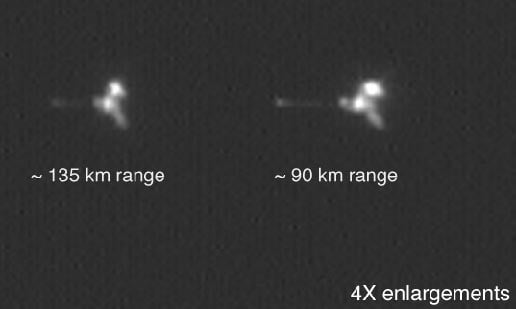Welcome to the moons of Mars, as you've never seen them.
NASA's aging 2001 Mars Odyssey orbiter recently snapped some unique views of the twin moons Phobos and Deimos, in an effort to better understand their texture and surface composition. The images are courtesy of the spacecraft's THEMIS (the Thermal Emission Imaging System) heat sensitive instrument, and show the thermal gradient across the surface of the moons in color. Odyssey has been studying the moons of Mars since September 2017. The recent images of Phobos taken on April 24, 2019 are especially intriguing, as they occurred during full illumination phase.
"This new image is a kind of temperature bulls-eye – warmest in the middle and gradually cooler moving out," says Jeffrey Plaut (NASA-JPL) in a recent press release. "Each Phobos observation is done from a slightly different angle or time of day, providing a new kind of data."
The full moon views of Phobos in the visible and infrared parts of the spectrum reveal material compositions, while views at half and crescent phases can bring out surface texture. Think of observing the Quarter Moon with the stark contrast between light and shadow, versus a Full Moon displaying brilliant crater rays.
The analysis will also look at the makeup of the moons and the abundance of two key metals: nickel and iron. The ratios of these elements may help to solve a key mystery surrounding the origins of the Martian moons: are they captured asteroids, or remnants of rubble blasted from the planet Mars, during an ancient impact?
The Wacky Moons of Mars
Either answer would paint a compelling tale for the curious moons. American astronomer Asaph Hall first sighted the two moons using the 26-inch refractor at the U.S. Naval Observatory during a favorable opposition in 1877. We got our first good looks at the moons during the 1969 Mariner 7 mission, revealing the two misshapen worlds. Innermost Phobos orbits Mars once every 7 hours and 39 minutes, faster than the planet rotates, meaning it actually rises in the west and sets in the east. Orbiting only 3,721 miles above the surface of Mars, 17 mile-wide (27 kilometers along its longest axis) Phobos will one day, tens of millions of years from now, crash down onto the surface of Mars. The future fate of outermost Deimos is less clear.
Recently, the Curiosity rover on Mars also snapped a unique view of the shadow of Phobos transiting the Sun, while both were below the horizon. The Mars InSight geodesy mission should also detect tiny land tides raised by the passage of Phobos overhead. But beyond just providing pretty pictures, these sorts of unique observations help scientists refine the exact orbits and compositions of these moons.
And that will come in handy if we ever plan on visiting them. The recent Mars Odyssey observations could highlight prime landing sites.
"By studying the surface features, we're learning where the rockiest spots on Phobos are and where the fine, fluffy dust is," says Joshua Bandfield (Space Sciences Institute) in a recent press release. "Identifying landing hazards and understanding the space environment could help future missions to land on the surface."
Japan plans on the joint JAXA/NASA Martian Moons eXploration (MMX) sample return mission to Phobos, launching in 2024.
Mars Odyssey is also a phenomenal asset in orbit around Mars. Launched in April 2001, Odyssey arrived in orbit around Mars on October 24, 2001, and remains the oldest Mars mission still in service. Odyssey was on-hand for every Mars landing since the Spirit and Opportunity missions, and continues to relay data from Mars InSight.
So much for Russian astronomer Iosif's Shklovsky's idea in the late 1950s that Phobos and Deimos were, in fact, hollowed out martian space stations. Perhaps in the coming decade, we'll see images from the surface of Phobos... with the huge disk of Mars on the horizon.
 Universe Today
Universe Today




